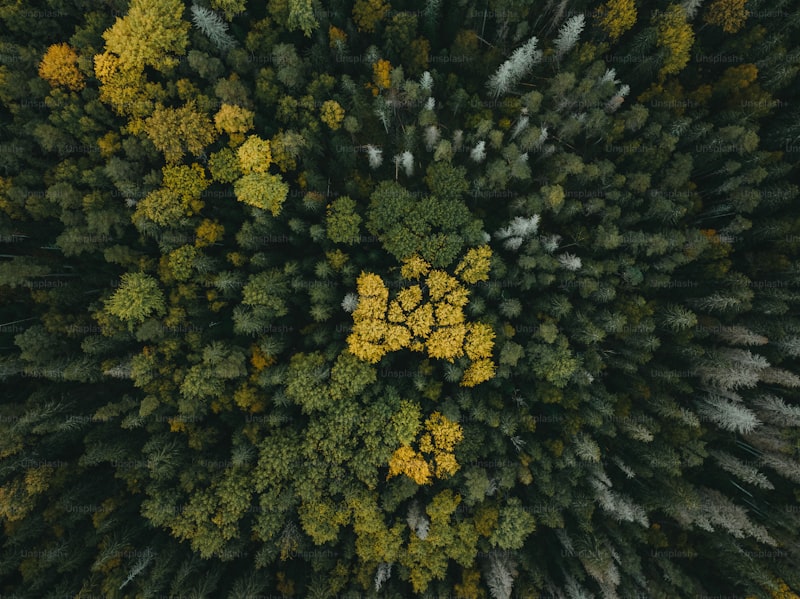Take the humble velcro, for instance. Its inception stemmed from a simple observation of burdock burrs sticking to clothing. Inspired by this natural adhesive mechanism, Swiss engineer George de Mestral invented Velcro, revolutionizing fastening systems worldwide. This ingenious adaptation from nature not only simplified everyday tasks but also highlighted the potential for innovation through biological processes.
Moreover, biomimicry extends beyond fasteners. The streamlined shape of the bullet train, designed to minimize friction and noise, draws inspiration from the kingfisher bird’s aerodynamic beak. By emulating nature’s sleek efficiency, engineers crafted a high-speed rail system that exemplifies both speed and sustainability.

In architecture, the term “biophilic design” emphasizes the integration of natural elements to enhance human well-being. Buildings adorned with green roofs or living walls not only provide aesthetic appeal but also promote air quality and reduce energy consumption. Such structures not only harmonize with their surroundings but also foster a deeper connection between occupants and the natural world.
Nature’s resilience and adaptability serve as powerful models for innovation in materials science as well. Spider silk, renowned for its strength and flexibility, has inspired the development of lightweight yet durable fabrics. These biomimetic materials are paving the way for sustainable alternatives in industries ranging from fashion to aerospace.
Ultimately, the essence of innovation lies in our ability to perceive and interpret nature’s intricate designs. By harnessing its principles, we unlock limitless possibilities for sustainable solutions and technological advancements. As we continue to explore and learn from the natural world, the journey towards innovation becomes a collaborative effort between human ingenuity and the wonders of nature itself.
Biomimicry: Harnessing Nature’s Designs for Technological Breakthroughs
In the quest for innovation, scientists and engineers often turn to the natural world for inspiration, a process known as biomimicry. This approach involves studying how living organisms solve complex problems and applying those principles to develop new technologies. From Velcro inspired by burrs to drones modeled after birds, biomimicry has led to groundbreaking advancements across various fields.

One fascinating example is the development of Velcro, which was inspired by the way burrs cling to fur with tiny hooks. Similarly, the sleek design of high-speed trains mimics the shape of a kingfisher’s beak, reducing noise and energy consumption. These adaptations not only enhance efficiency but also minimize environmental impact, showcasing nature’s efficiency.
Moreover, biomimicry isn’t just about imitating forms; it’s about understanding systems. For instance, the study of termite mounds has revolutionized architecture with buildings that self-regulate temperature and air flow, much like these mounds maintain a stable internal environment. This application of biological principles not only improves sustainability but also promotes resilience in the face of climate change.
In medicine, researchers are exploring how the human body’s immune system can inspire new approaches to fighting diseases. By understanding how biological systems detect and respond to threats, scientists aim to develop more effective vaccines and treatments.
The potential of biomimicry extends beyond current applications. As technology advances, so too does our ability to unlock nature’s secrets. By continuing to learn from the natural world, we can create more sustainable, efficient, and innovative solutions to the challenges we face today and in the future.
From Flora to Functionality: The Role of Plant Adaptations in Engineering
Consider the cactus, a desert dweller notorious for its ability to thrive in arid conditions. Its spines, often mistaken for leaves, actually serve multiple functions. Beyond deterring herbivores, they reduce air flow, minimizing water loss through transpiration. This adaptation underscores how plants, much like engineers, optimize resources for maximum efficiency.
In wetlands, the mangrove tree showcases another marvel of adaptation. Its aerial roots not only provide stability but also facilitate gas exchange in waterlogged soils, where oxygen availability fluctuates. Like hydraulic systems in human-engineered structures, these roots efficiently manage internal pressures, ensuring the tree’s survival in inhospitable conditions.
The venus flytrap, a carnivorous plant native to North Carolina, exhibits a sophisticated mechanism for prey capture. Triggered by the slightest touch, its specialized leaves snap shut, entrapping insects. This rapid response mechanism, akin to a high-speed sensor in robotics, demonstrates how plants have evolved dynamic solutions for obtaining nutrients in nutrient-poor soils.
Moreover, plants like the lotus demonstrate self-cleaning surfaces through nanoscale wax structures. By repelling water and dirt particles, the lotus leaf stays clean, a feature mimicked in architectural coatings to maintain cleanliness without frequent washing.
Learning from the Wild: Animal Behaviors Revolutionizing Robotics
Nature has long been a source of inspiration for innovation, particularly in the field of robotics. Scientists and engineers are increasingly turning to the behaviors and adaptations of animals to enhance the capabilities of robots. By studying how creatures navigate their environments, communicate, and interact, researchers are unlocking new possibilities for robotics.
One remarkable example is the way in which robots are learning from the agility and dexterity of animals like cheetahs and geckos. Engineers have developed robots that mimic the swift movements of cheetahs, enabling them to navigate rough terrain with remarkable speed and stability. Similarly, robots inspired by geckos’ ability to climb walls effortlessly are being designed for tasks such as inspection and maintenance in complex environments.
Communication among animals has also influenced robotics. Studying the intricate ways in which bees communicate through dance, for instance, has inspired the development of swarm robotics. These systems enable multiple robots to coordinate their actions autonomously, much like a hive of bees working towards a common goal.
Moreover, animal behaviors are reshaping how robots interact with humans. Robots designed with social interaction cues inspired by animals like dogs are being used in therapeutic settings, offering companionship and support to individuals in need. These robots employ gestures, expressions, and even vocalizations to foster a sense of connection and trust.
The field of robotics continues to evolve rapidly, driven by insights gained from observing nature’s creations. As researchers delve deeper into the behaviors of animals, from the depths of the ocean to the heights of the sky, they uncover new strategies and mechanisms that can be applied to robotic systems. This interdisciplinary approach not only pushes the boundaries of technological innovation but also deepens our understanding of the natural world.
By emulating the strategies perfected over millennia by animals, robotics is advancing towards more efficient, adaptive, and versatile systems. The ongoing synergy between biology and technology promises to yield even more groundbreaking discoveries in the future, shaping a world where robots seamlessly integrate into our lives, inspired by the wonders of the wild.
Nature’s Blueprint: Architectural Wonders Inspired by Natural Forms

Have you ever looked at a building and felt a sense of awe, as if it was somehow part of the natural landscape? That feeling isn’t by chance. Architects and designers often draw inspiration from the natural world, using its forms and patterns to create breathtaking structures that harmonize with their surroundings.
Take the Sydney Opera House, for example. Its sail-like roof mirrors the shape of waves in Sydney Harbour, blending seamlessly with the water below. This iconic design not only captures the essence of the sea but also reflects the movement and fluidity found in nature.
Similarly, the Gherkin in London stands tall with its distinctive curved glass facade, resembling a giant cucumber glistening in the sun. This organic shape not only enhances its energy efficiency but also integrates beautifully into the city skyline, like a natural growth amidst urban sprawl.
Architectural marvels like the Sagrada Família in Barcelona showcase how nature’s forms can inspire intricate details and structural innovations. Antoni Gaudí, the mastermind behind this basilica, drew heavily from the shapes of trees and the mathematical principles found in nature to create a spiritual and awe-inspiring space.
But it’s not just about aesthetics. Biomimicry, the practice of emulating nature’s designs and processes, has led to groundbreaking innovations in architecture. From self-cooling buildings inspired by termite mounds to energy-efficient designs modeled after bird wings, architects are increasingly looking to nature to solve modern challenges sustainably.
Imagine walking through a building that breathes like a living organism or one that generates energy like a photosynthesizing plant. These futuristic concepts are rooted in nature’s efficiency and adaptability, promising a future where architecture not only blends with nature but actively contributes to its preservation.
As we continue to explore and understand the complexities of the natural world, architects will find endless inspiration in its diversity and resilience. Each structure inspired by nature tells a unique story, inviting us to marvel at the wonders of both human creativity and the natural world that inspires it.
The Genius of Evolution: How Biological Processes Drive Modern Innovation
From the sleek aerodynamics of birds’ wings to the self-repairing properties of our skin, evolution has honed biological processes over millions of years, perfecting solutions to complex challenges. Take the example of Velcro, inspired by the tiny hooks on burr seeds that latch onto fur or clothing—a simple yet effective mechanism that revolutionized fastening systems.
Nature’s efficiency doesn’t stop there. Biomimicry, the practice of drawing inspiration from nature’s designs, has led to breakthroughs in various industries. For instance, the bullet train in Japan was inspired by the kingfisher bird’s beak, which minimizes splashes when diving into water. By mimicking this shape, engineers created a quieter and more energy-efficient train.
Even the field of medicine benefits greatly from evolutionary insights. Antibiotics, derived from naturally occurring microorganisms like fungi and bacteria, exemplify how nature’s own solutions can combat diseases. Understanding evolutionary processes helps scientists stay ahead of antibiotic resistance, a growing concern in global health.
Beyond tangible inventions, evolution also shapes strategies in business and technology. The concept of “survival of the fittest” isn’t just a biological principle—it’s a philosophy that drives competition and innovation in markets worldwide. Companies evolve by adapting to changing environments, much like species do in nature, ensuring only the most adaptable thrive in competitive landscapes.
Adapting to Survive: Lessons from Nature’s Resilience in Technology
Imagine the mighty sequoia, standing tall for centuries, adapting to environmental changes through its robust structure and interconnected root systems. Similarly, in technology, companies that embrace adaptability like the sequoia thrive amid rapid shifts and challenges.
Consider the chameleon, effortlessly blending into its surroundings to evade predators. In technology, companies that can swiftly adapt their strategies and products to fit changing market demands, much like the chameleon changes its colors, gain a competitive edge.
The ant colony, a marvel of organization and cooperation, teaches us about the power of collaboration in achieving collective goals. Likewise, tech ecosystems flourish when companies collaborate across disciplines and industries, pooling resources and expertise to innovate effectively.
Nature’s cycles of renewal, such as the rebirth after a forest fire, inspire tech innovators to reinvent and rejuvenate, turning setbacks into opportunities for growth. Just as a forest rebounds with new life after a blaze, tech companies can emerge stronger and more resilient after disruptions.
Frequently Asked Questions
How can studying ecosystems lead to sustainable innovations?
Studying ecosystems can lead to sustainable innovations by revealing natural processes and relationships that inspire efficient technologies and practices. Understanding how species interact, conserve resources, and adapt to environmental changes informs the development of eco-friendly solutions in various fields such as agriculture, energy, and waste management.
How does biomimicry contribute to solving engineering challenges?
Learn how biomimicry applies nature’s solutions to engineering challenges, offering innovative designs inspired by biological systems. Discover how this approach enhances sustainability, efficiency, and resilience in various fields such as materials science, robotics, and architecture.
What are some famous examples of nature-inspired inventions?
Explore notable examples of nature-inspired inventions that have revolutionized technology, including Velcro inspired by burrs, bullet trains modeled after kingfisher beaks, and solar cells drawing from photosynthesis. Discover how these innovations mimic nature’s efficiency and elegance.
How does nature’s design influence modern technology?
Explore how nature’s efficient designs inspire and enhance modern technology, from biomimicry in engineering to sustainable innovations.
What are biomimicry and its applications in innovation?
Learn about biomimicry and its applications in innovation. Discover how this approach draws inspiration from nature to solve human challenges, enhancing sustainability and efficiency across various industries.


